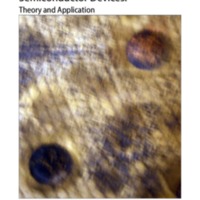Semiconductor Devices: Theory and Application
Dublin Core
Subject
Description
Just as the late eighteenth through nineteenth centuries are known as the industrial age due to the rise of
mechanization, the twentieth century can be referred to as the beginning of the electronic age. The first half of
the century was dominated by electronic vacuum tubes that made possible devices such as radio, television,
radar and long distance telephone. The technology of the vacuum tube was displaced mid-century by the
introduction of solid-state semiconductors. The first working prototype transistor was invented at Bell Labs in
1947 by John Bardeen, Walter Brattain and William Shockley. This device, properly referred to as a point
contact transistor, was quickly superseded by the bipolar junction transistor, a major topic of this text.
mechanization, the twentieth century can be referred to as the beginning of the electronic age. The first half of
the century was dominated by electronic vacuum tubes that made possible devices such as radio, television,
radar and long distance telephone. The technology of the vacuum tube was displaced mid-century by the
introduction of solid-state semiconductors. The first working prototype transistor was invented at Bell Labs in
1947 by John Bardeen, Walter Brattain and William Shockley. This device, properly referred to as a point
contact transistor, was quickly superseded by the bipolar junction transistor, a major topic of this text.
Creator
Source
https://textbooks.opensuny.org
Publisher
Date
2018
Contributor
Baihaqi
Rights
Creative Commons
Relation
Electrical Engineering Technology .Mohawk Valley Community College
Format
PDf
Language
English
Type
Files
Collection
Citation
James M. Fiore, “Semiconductor Devices: Theory and Application,” Open Educational Resources (OER) , accessed December 10, 2025, https://oer.uinsyahada.ac.id/items/show/2253.


